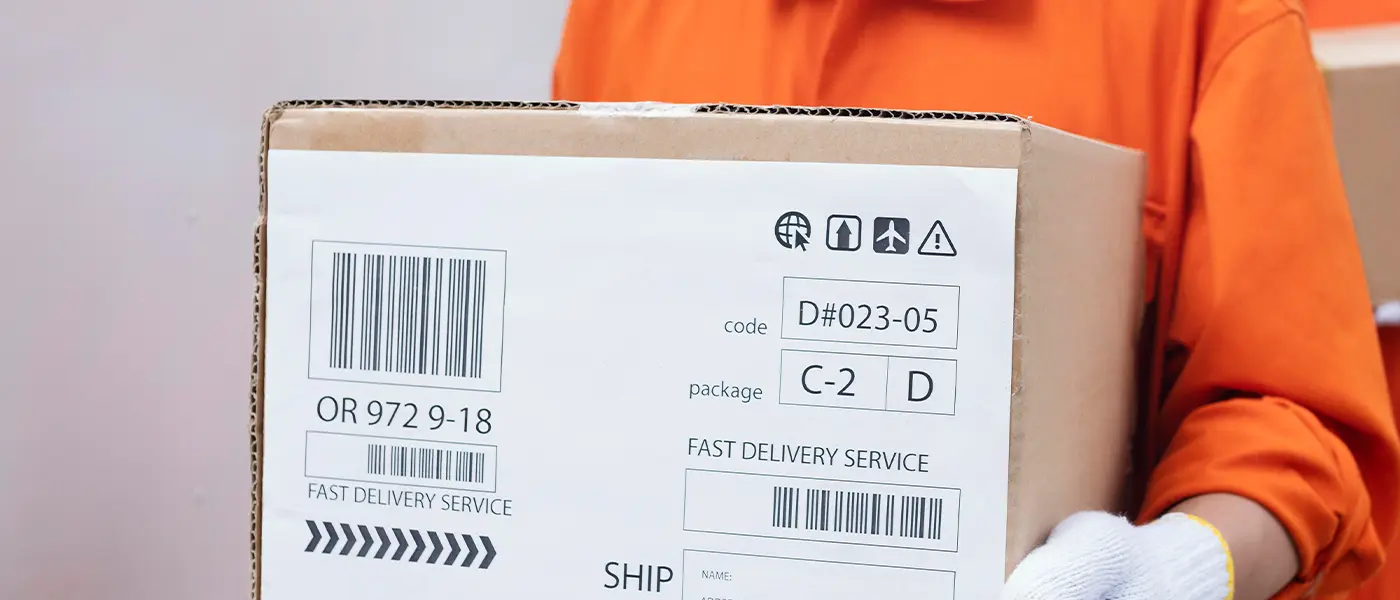Introduction
In today’s e-commerce business market, customers’ are no longer persuaded only by low prices or an extensive range of products. With the mushrooming of various online brands competing against each other, customer experience has become an integral component of the e-commerce experience. Customers feel e-commerce websites that provide real-time details, conditions, and order status is more reliable and predictable.
Creating a wholesome customer experience once the product has been added to the cart and is ready for shipping is also critical for the e-commerce business. It helps retain the customers visiting the website and brings in new customers. It enhances the brand image of the e-commerce website and drives up product sales. Customers are generally willing to opt for a convenient system that provides them with real-time updates about status of the orders they have placed.
As e-commerce businesses continue to make inroads in the online product market, investing in efficient and robust order management and fulfillment schemes is extremely important for companies. It helps in real-time accountability and the overall customer experience for buyers.
With that in mind, let us understand how and why it is essential for your e-commerce business to provide comprehensive order status for products your customers purchase. Let us also understand how to order statuses are defined and what it means, along with the various types of order statuses that e-commerce businesses use.
What is the E-commerce Order Status?
In e-commerce businesses, customers generally book their products during a particular business day, and those products are delivered to them within a specified period. Orders generally have two-way visibility. The status of the order is visible to the end customer as well as the representatives of the e-commerce business like the manager, support specialist and more..
Order status is an essential cue that alerts the e-commerce business to the type of action each booking requires. Most order statuses depend on the action taken by the customer and end-product user and help enterprises, e-commerce owners, and managers determine the next course of action. Order status can predict the following steps to simplify order fulfilment and inform the customer about the product condition.
As we have discussed earlier, the customer creates order status after payment and checkout. Order status, therefore, tracks the product’s journey in real-time, and the e-commerce manager can decide what future action is needed to deliver the product to the customer. Let us understand the various facets and issues regarding ordering statuses.

What Does the Order Status Process Mean?
Order status gives customers a brief timeline by which the products should reach them. It provides the e-commerce owner or the manager an insight into the exact steps required to fulfill the order.
The customer generates the order status upon payment of the prices of the products bought. The customer then receives a unique customer order status. Generating an order status implies that the order has been entered into the e-commerce system, and the next steps to achieve order fulfillment will start. Most businesses have a timeline within which most orders are completed, and the customers can keep track of their orders by way of the order status.
For most e-commerce businesses today, providing an enjoyable customer service experience has become vital, and providing order status is critical in that system. For most e-commerce ventures, providing reliability and predictability has become vital to their success, allowing the customer to follow and track the product from being shipped until it is delivered.
After paying the prices of the products on any business day, the customer would naturally want to keep track of their items. This has become key to determining whether the customer shall return to make successive purchases from the e-commerce site. Without such essential factors, increasing customer retention, reducing customer anxiety, and buyer remorse will become significant issues that lead to customer churn.
Types of Order Status
Here is a list of the most commonly used terms regarding order statuses and their meaning. It is important to note that generally, customers can view most of these statuses in the ‘My Orders’ section of the e-commerce website.
a. Pending: This means that the customer has begun the checkout process without making the necessary payments for the products.
b. Pending Payment or Awaiting Payment: The customer may have initiated the payment process but is yet to pay for the product.
c. Payment Received: This means that the customer has completed the payment for the order.
d. Order Confirmed: This means that the customer has completed the payment and the order has been received and acknowledged by the e-commerce site.
e. Failed: This means that the customer could not complete the payment or other verifications required to complete the order.
f. Expired: The customer could not make the payment for the products within the stipulated payment window.
g. Awaiting Fulfillment: This means that the customer has made the required payments for the price of the products, and the products shall now be shipped.
h. Awaiting Shipment: This means that the products bought by the customer are now in a queue ready to be shipped and are waiting to be collected by the shipment service provider.
i. On Hold: This means that the stock inventory is reduced by the number of products the customer has requested. However, other steps need to be completed for order fulfillment.
j. Shipped: This means that the shipment provider has collected the products and the products are on their way to the customer.
k. Partially Shipped: This means that only a part of the order or some products in the order are shipped.
l. Awaiting Pickup: This means that the products have been shipped to either the customer-specified location or the business-specified location and are waiting to be picked up by the customer for delivery.
m. Completed: This means that the product has been shipped and delivered, and the payment for the same has been made. The customer, at this point, can receive an invoice regarding the product they bought.
n. Canceled: This might mean a variety of things. Both the seller and the customer may cancel an order. An order generally shows canceled if the customer fails to make the payment or if the seller has run out of stock of a particular product. Whether or not the customer is entitled to a refund of their money, in this case, depends on the stage of the order and other variables.
o. Declined: The seller declares that they cannot ship and fulfill the order.
p. Refunded: The seller agrees to refund the amount paid by the customer to buy the product.
q. Partially Refunded: The seller partially refunds the amount paid by the customer while buying the product.
r. Refund Rejected: The seller refuses to process the entire or partial refund of the amount paid by the customer at the time of buying the products.
s. Disputed: The customer has raised an issue with the order fulfillment or the refund procedure. Generally, customers raise disputes when e-commerce websites refuse to refund the amount paid by them.

What is Fulfillment Status?
Fulfillment status means information on the processing and shipping of customer orders. Order fulfillment status shows the stage at which your order is currently. An order status that says ‘fulfilled’ means that the order has already been shipped. An order status that shows ‘unfulfilled’ means that the order is awaiting shipment.
Order fulfillment, therefore, involves specific sequential steps from receiving the order to delivering it. E-commerce companies prioritize prompt order fulfillment strategies as studies show customers do not like waiting for more than two days to have their orders.
The order fulfillment status generally incorporates the following steps and types:
a. Inventory Handling: E-commerce websites can either handle the inventory management themselves or outsource it to third-party operators.
b. Inventory Storage: After receiving the inventory, it is essential to store them. Most e-commerce websites use large warehouses to store their inventory.
c. Fulfilled: The products have been shipped by the e-commerce business and shall be delivered to the customer.
d. Unfulfilled: When an order is placed, but it is not shipped yet.
e. Partially fulfilled: This means a part of the order or a few of the products have been shipped for delivery.
f. Awaiting Shipment: The product is ready to be shipped and is waiting to be picked up by the shipment carrier.
g. Shipment On-hold: This means that the number of shipment units has reduced the inventory quantity. However, it has not been shipped for some specific reason.
What Does the Unfulfilled Order Status Mean?
An unfulfilled order status means that the order has not been packed and shipped. Generally, once the shipping is processed, the customer receives a notification that the order has been shipped and is scheduled to reach at some specific time. Once the order for the product is picked up, packed, and shipped, the order status changes to ‘fulfilled’ which means shipping of the order is completed.
FAQs
What is an e-commerce order status, and where to find it?
An e-commerce order status is created after the customer buys a product. It tracks the steps required before the product finally reaches the customer in real time. Buyers can access it in the ‘My Orders’ section of any e-commerce website.
What is meant by ‘fulfilled’ and ‘unfulfilled’ order statuses?
Fulfilled order status means that the order has been shipped to the customer by the e-commerce business, and unfulfilled means that the order has not yet been shipped.
What are the various order statuses, and how do I track them?
There are various steps in case of order statuses, and the most important are Payment Received, Order Packed, Awaiting Shipment, Shipped, Completed, Refunded, etc. Most e-commerce websites generally send notifications to the customers when significant steps concerning the order are completed, and the customer can track their orders by accessing the ‘My Orders’ section of the website.
How can I cancel, edit, return and refund my order?
The customer can cancel the order at any time during the order fulfillment process. However, if the order is shipped, e-commerce websites generally partially refund the amount after deducting shipping charges. Customers may edit details regarding the order, or the customer may raise a return request for the order through the ‘My Orders’ section on the website. The refund status of the order is also visible either there or in the ‘Order Refund’ section.










